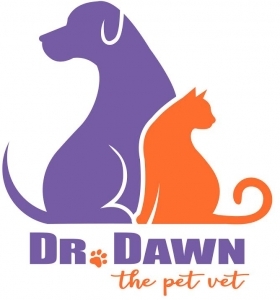 Pet obesity is the number 1 preventable medical condition seen in veterinary hospitals. A study, done by the Association for Pet Obesity Prevention reported in 2012 that 52.5% of dogs, or approximately 36.7 million dogs in the U.S. are overweight or obese. As few as 5 pounds above your dog’s ideal weight can put it at risk for developing certain medical conditions, while at the very least, adding to the orthopedic wear and tear on their joints. Overweight and obese dogs are expected to live shorter lives than their normal-weight counterparts.
Pet obesity is the number 1 preventable medical condition seen in veterinary hospitals. A study, done by the Association for Pet Obesity Prevention reported in 2012 that 52.5% of dogs, or approximately 36.7 million dogs in the U.S. are overweight or obese. As few as 5 pounds above your dog’s ideal weight can put it at risk for developing certain medical conditions, while at the very least, adding to the orthopedic wear and tear on their joints. Overweight and obese dogs are expected to live shorter lives than their normal-weight counterparts.
Dogs at a healthy weight interact with their families more, and are more energetic and playful. Their are actually professional, certify dog trainers who focus on training and fitness in dogs. The benefits are physical and helps calm them. Exercising together with your dog will improve your relationship, while helping some behavioral issues that may exist. For example, you may see a reduction in destructive chewing, digging, scratching, hyperactivity, jumping up and other attention-getting behaviors.
Gyms, like the human-dog gym K9 Fit Club in the Chicago area, which is expanding nationwide, recommend the following exercises. Before you begin, you may want to get the go ahead from your doctors (human and veterinarian). The goal is to increase both you and your dog’s stamina, cardiovascular fitness, strength, and agility.
Stamina and endurance
Activity: Hiking or walking
How often: Start with 30 minutes a day, three days a week; gradually build time, frequency and distance. Over the next six months to a year, work up to an hour a day, five to seven days a week, if you are able to fit it into your schedule.
Tips: Walk at a brisk pace, enough to break a light sweat, and don’t allow your dog to sniff and lollygag while exercising. (That is ok on strolls though!)
Caution: Select walking surfaces that are soft on paws and human joints, sigh as dirt or grass, rather than asphalt or concrete.
Cardiovascular strength
Activity: Canicross, skijoring, or bikejoring. What’s that? It is when you have your dog in a harness and you are connected by a bungee leash attached to a belt you wear. This allows you to also get exercise, while you both run, hike, ski or bike with your dog pulling. There are also simpler cardio activities, like flyable, disc dog and fetch.
How often: Start with 60 minutes a day, three days a week, in an area suited to the activity. Gradually build time, frequency and distance.
Tips: Before attempting these sports, make sure your dog adjusts to the harness, and train him/her to understand the activity.
Caution: Be careful not to overwork your dog. Check paw pads, offer water frequently, and make time for rest. Avoid extra hot, humid days for long excursions.
Activity:Body weight exercises- air squats, pushups and situps for you; sit-stands, sit-downs and rollovers for your dog. Although it is not practical to pump iron with your dog, you can build muscle in your dog as you lead him in through a series of doggie squats. Try having him roll over or crawl up a hill to add more strength and resistance.
How often: Three sets of 10 each, 3 days a week.
Tips: Alternate sets between you and your dog. For example, do your first set of 10 squats, have your pup do his first set of 10, proceed to your second set, and so on.
Caution: Before and after these movements, warm up and cool down stretches are a good idea. Go slowly, and build up to harder workouts.
Agility and coordination
Activity: Ladder Walk. Nimbly maneuvering around obstacles is something all dogs and humans can benefit from doing. If you don’t have an agility class to enroll in, start with a ladder at home. Lay it on the ground and have him walk through it. It teaches good footwork and to be aware of where his feet are, and helps him to come into balance.
How often: 5 times, 5 days a week.
Tips: Using a tasty treat as a lure walk alongside the ladder and lead your dog in front of you.
Caution: Don’t go to quickly; the purpose is to practice footwork, not speed.
Find what you and your dog like, and skip those activity that you don’t enjoy. Avoid burnout. This should be fun time together for both of you. Take breaks, and remember to always keep the element of play in the game.
These activities may not be right for you. If not, at the very least, just get walking with your dog. Every little bit of exercise helps to keep them trim, and HAPPY!
Dr. Dawn
Please share and subscribe here






